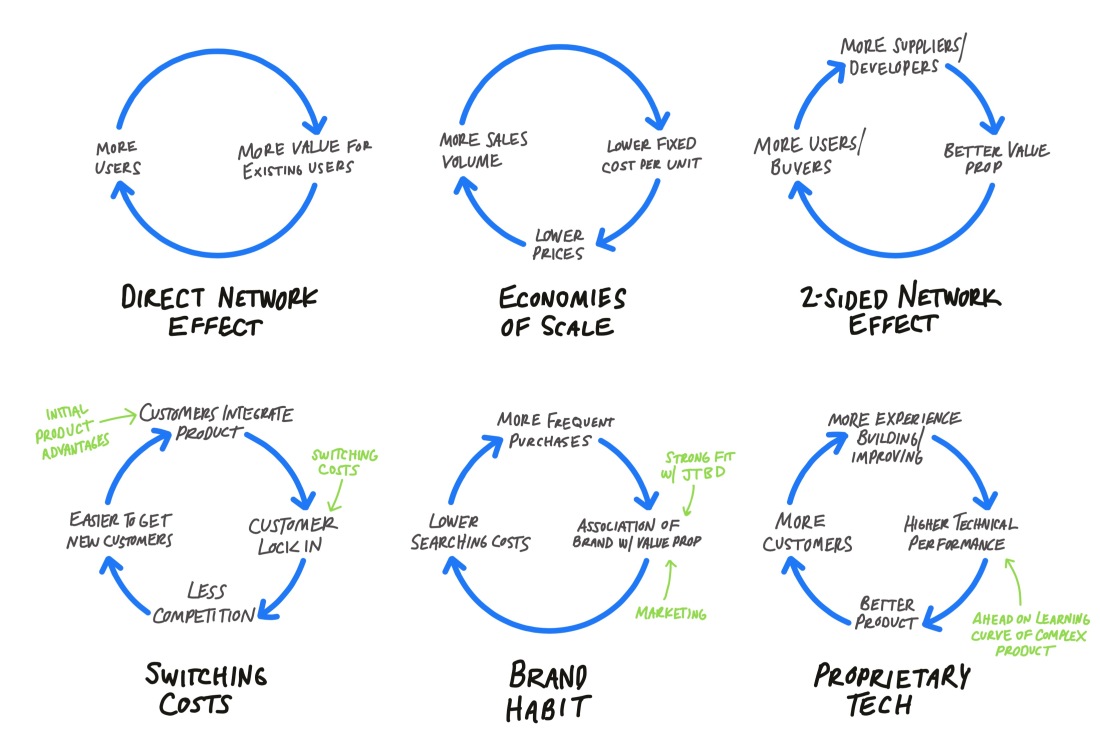Advantage Flywheels
Competitive advantage can be represented visually as 1 or more feedback loops. These create the advantage “flywheel” that maintain and grow a moat over time. Think of a big, heavy wheel that takes some effort to get started but then coasts off its own momentum.
Before continuing, check out Eric Jorgenson’s primer on the flywheel mental model here.
Flywheel archetypes
Here are 6 simple examples of common advantages represented as flywheels (or “causal loops” in systems terminology). These loops are generalized — they’ll be expressed uniquely in every company that has them.
A few examples of how each advantage flywheel can vary:

....MOREAs Eric discussed in his flywheel post, each wheel needs a push to get started. Written in green on a few of the archetypes above are initial advantages to get the wheels moving. Whether it’s a better user experience, a technical breakthrough, or a bootstrapped network based off of an existing network (college campuses for FB) or a useful utility (Instagram).
- In the Economies of Scale flywheel above, the primary driver of more volume is low prices. This fits for most consumer businesses, but lower prices aren’t always the outcome of lower unit costs. If prices are maintained or increase, scale will yield higher margins → more resources to spend on growth → more sales volume.
- The Brand Habit flywheel exhibits the typical loop for habit-reinforcing association of a brand with a specific quality or job-to-be-done. Think “thirst quenching happiness” for Coca-Cola and “low prices” for Wal-Mart. Another example of brand advantage is more of a social proof effect: Product has success → the cool kids want it → improved perception of product → …
Real world examples
The above archetypes can be combined to create more comprehensive flywheels modeling the driving “engines” of each company’s moat:...